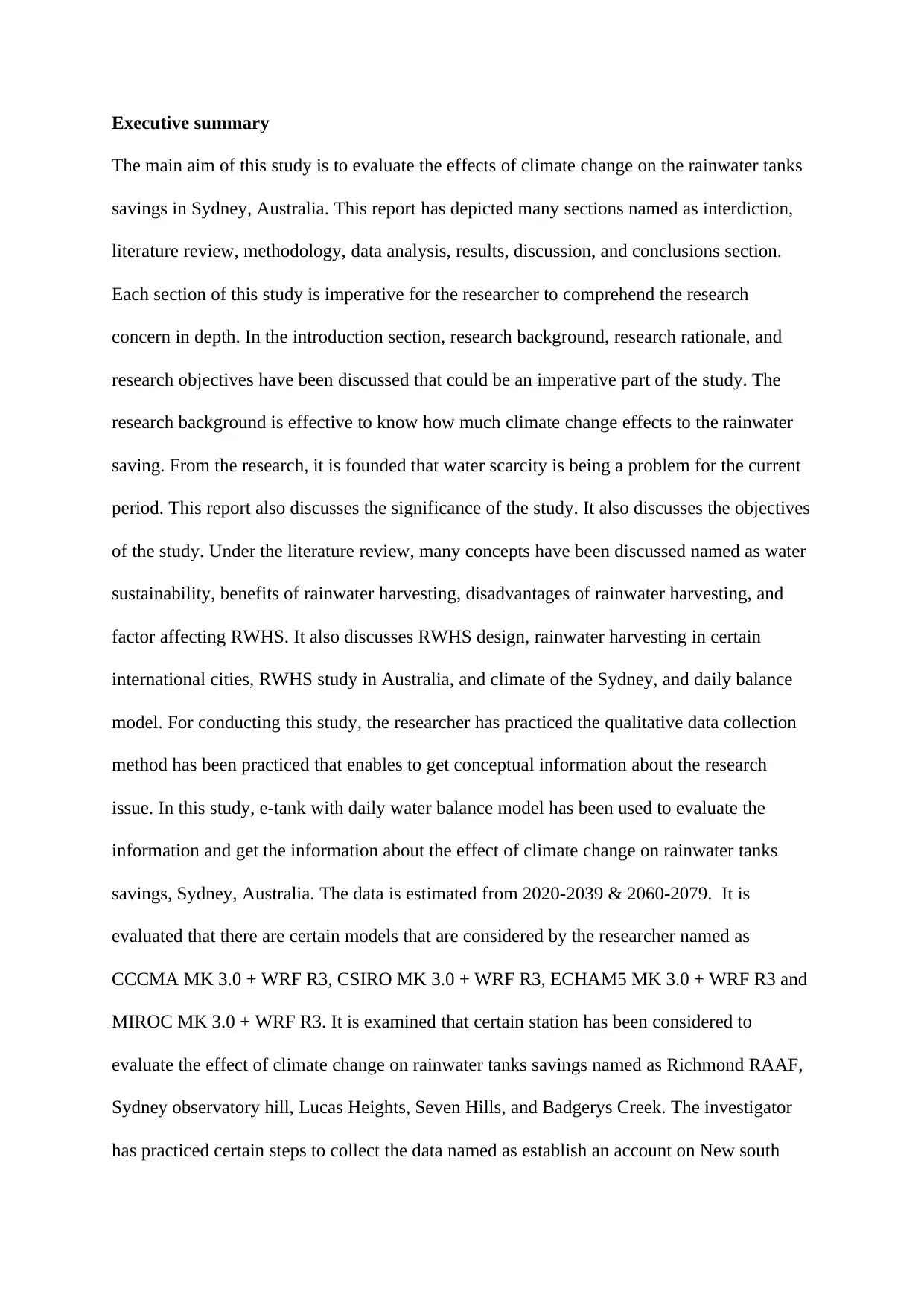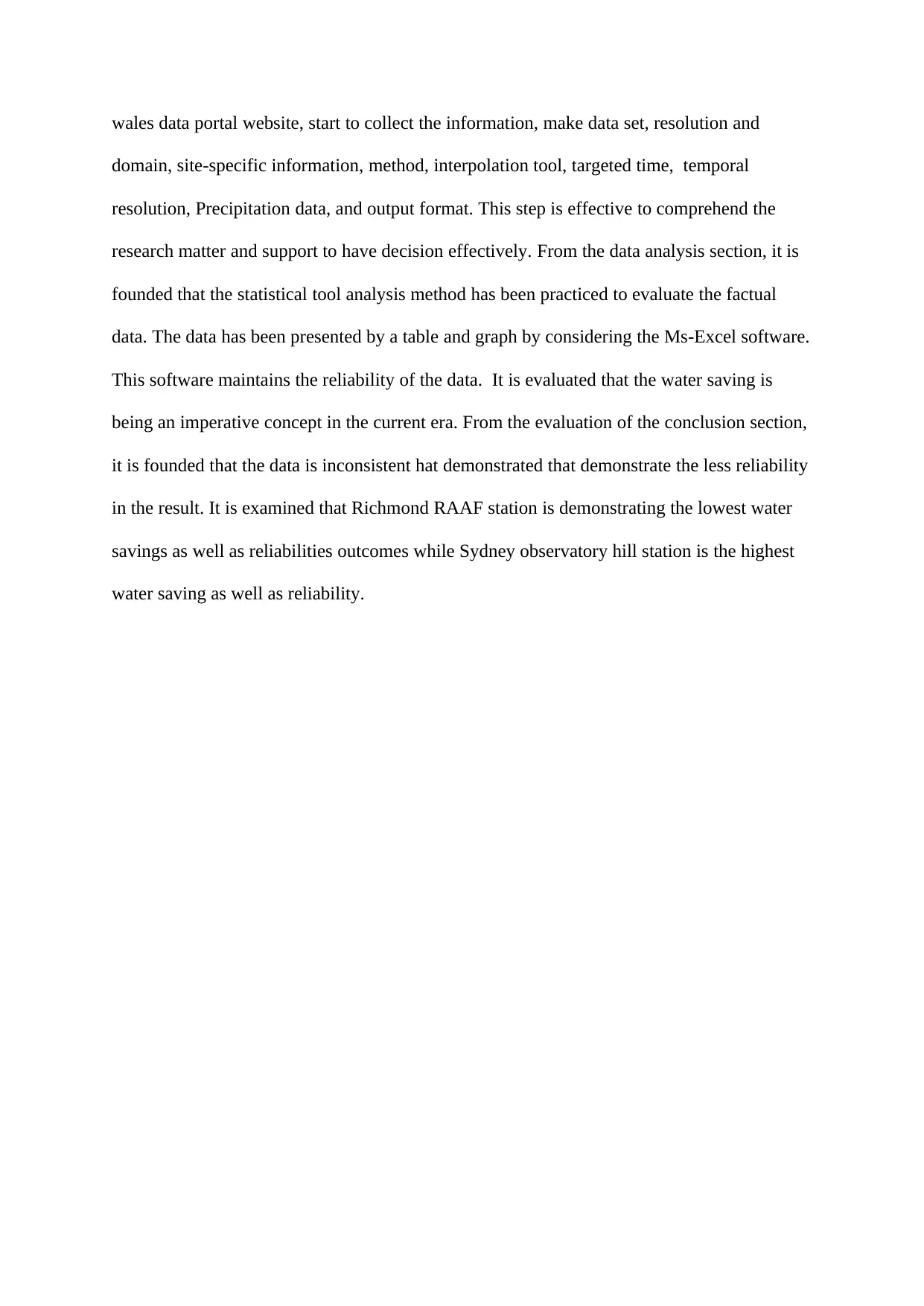Master of Engineering: Climate Change and Rainwater Tank Savings Study
VerifiedAdded on 2023/01/12
|2
|567
|44
Report
AI Summary
This report evaluates the impact of climate change on rainwater tank savings in Sydney, Australia. The study includes an introduction outlining the research background, rationale, and objectives, emphasizing the significance of water scarcity. A literature review covers water sustainability, rainwater harvesting benefits and drawbacks, factors affecting adoption, design considerations, and global case studies. The methodology employs qualitative data collection and the e-Tank daily water balance model, analyzing data from 2020-2039 and 2060-2079 using various climate models and stations. Data analysis utilizes statistical methods, presenting results via tables and graphs in MS-Excel. The conclusion notes data inconsistencies, with Richmond RAAF showing the lowest water savings and Sydney Observatory Hill the highest. The report provides a comprehensive analysis of climate change's effects on rainwater harvesting in Sydney, offering insights into water conservation and sustainability.
1 out of 2




![[object Object]](/_next/static/media/star-bottom.7253800d.svg)